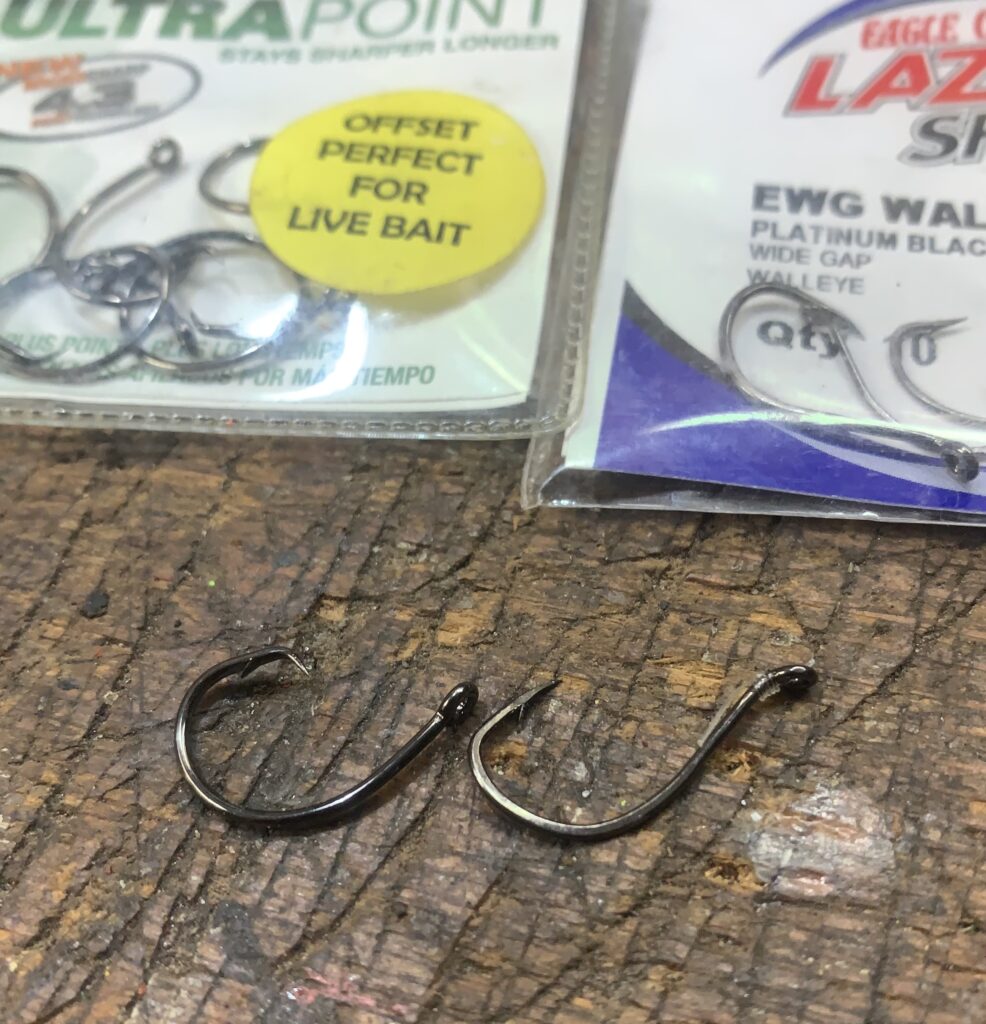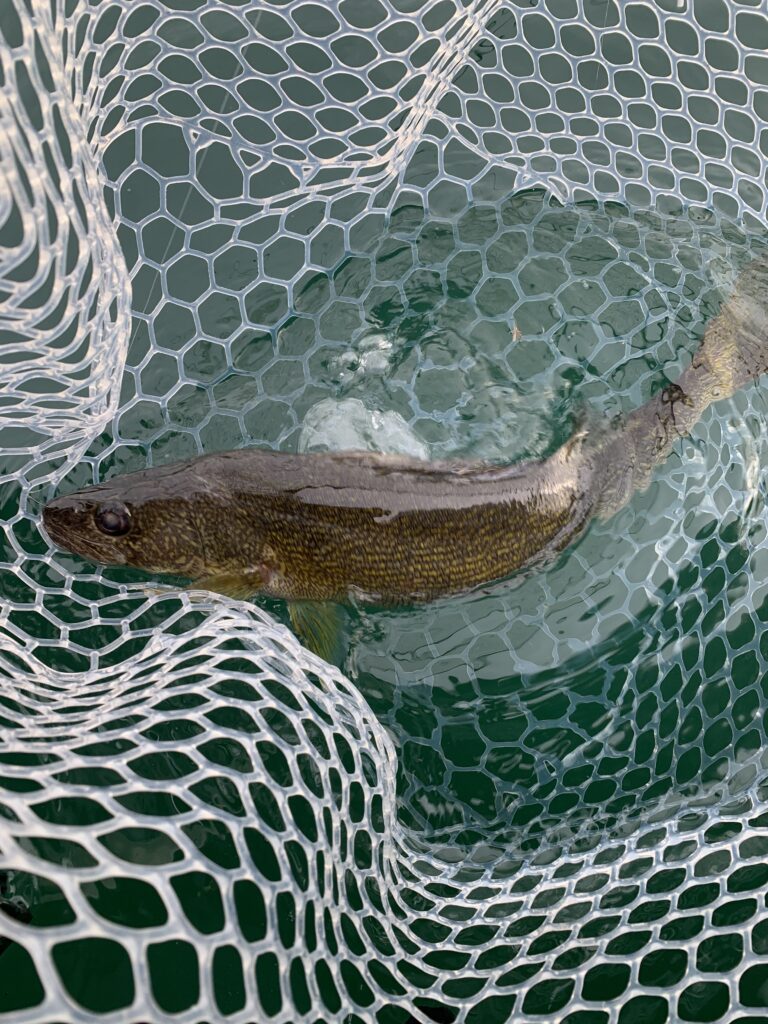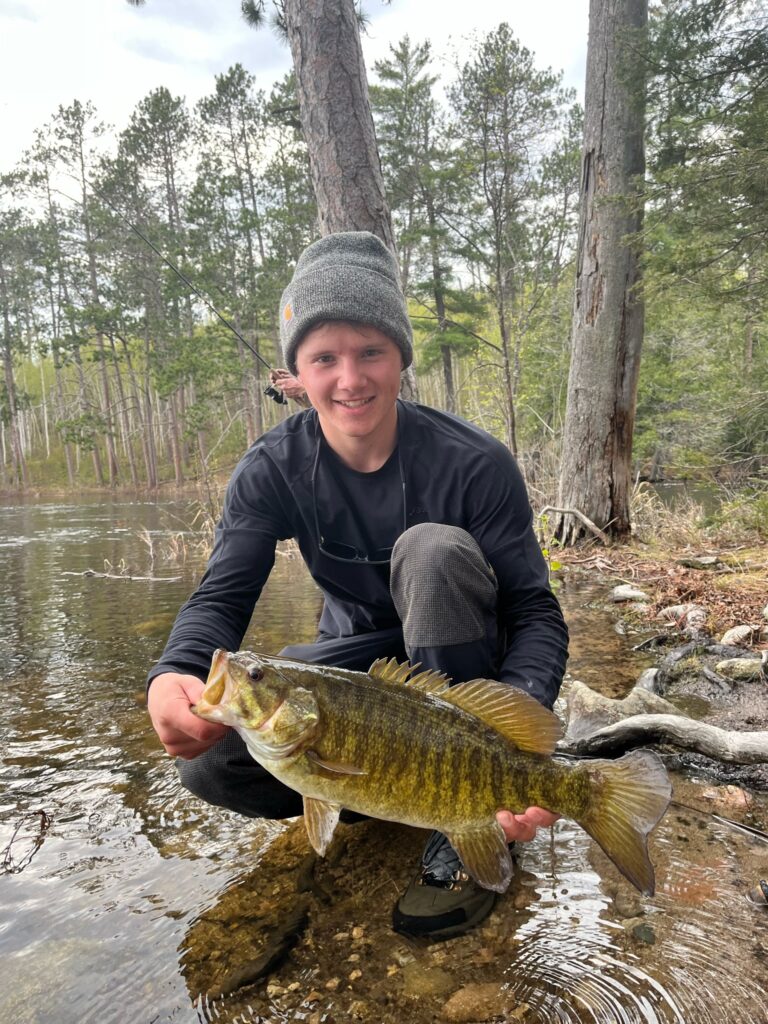Everyone can enjoy the outdoors and our fisheries by using safe catch and release fishing practices. Catch and release fishing helps create a sustainable ecosystem that can be enjoyed for generations to come. If you are a beginner to fishing, it is important to learn about the proper measured to take to maximize catch and release success. Here at The Angler’s Line we are devoted to fishing education and conservation, and hope to inspire the younger generation to do the same!
Article Navigation:
- What is Catch and Release Fishing?
- Limit Handling Time
- Treble Hooks
- Barbless Hooks
- Circle Hooks
- Fishing Nets
- How to Properly Handle Fish
- Water Depth for Catch and Release Fishing
- Water Temperature for Catch and Release Fishing
- Catch Photo Release Fishing Tournaments
What is Catch and Release Fishing?
As the name implies, catch and release fishing refers to immediately letting a fish go to swim another day. Many conservational minded anglers use catch and release fishing to sustain the resource and give other anglers the opportunity to catch that fish. When done correctly, fish have high chances of survival after being released. At the same time, catch and release mortality can be quite high if fish are not properly handled. This article will teach you some measures to take to ensure your fish survives after being released.

Limit Handling Time To Improve Catch and Release Success
The length of time that you handle a fish can often be the reason why a fish does not release successfully. Be prepared with pliers and a net to remove the hook as soon as the fish is landed. If you want a picture, leave the fish in the water until your camera is ready. The more time wasted, the more time the fish is being handled out of the water. A good rule of thumb is to keep your handling time to a maximum of 60 seconds.
Treble Hooks
I have found that one of the biggest contributors to long handling times is the hook that you use. Treble hooks are hooks that have three points on them and are typically used on hard-bodies lures like crankbaits. As you can imagine, all these hooks end up sticking the fish in multiple locations. This not only is damaging to the fish, but also makes it much more difficult to remove the hooks in a timely manner.
There are a few options for treble hooks to improve this. One modification I use all of the time is removing the front treble hooks and only using one treble hook on the back of a bait. This works best for steady retrieves and trolling applications.
Another option is to pinch the barbs, which drastically helps with hook removal.

Barbless Hooks
As hinted at earlier, barbless hooks are beneficial to catch and release fishing. The barb of a hook is what prevents the hook from backing out after a fish is hooked. At the same time, they also make it much more difficult to remove the hook once a fish is hooked. Hook barbs get stuck in fishing nets as well, and can lead to time consuming tangles and increased handling time.

Ever since my trip to Canada where barbless hooks were required, I have been experimenting with barbless hooks back home. You will be surprised how beneficial they are at reducing handling time. The main thing to remember is to keep constant pressure on the fish when reeling it in since there is no barb holding the hook in place.
Circle Hooks
If using live bait, I highly recommend trying circle hooks. Live bait typically results in the most deep hooks, limiting catch and release success. The primary cause of catch and release mortality is hooking injury. Circle hooks are designed to hook fish in the corner of the mouth instead of deep in the stomach. If you use traditional live bait hooks, set the hook earlier to prevent fish from swallowing the bait.

Bonus tip: If a fish swallows a hook deep, it is recommended to cut the hook off as close as possible instead of trying to remove the hook. The fish has a better chance of survival this way.
Fishing Nets
Fishing nets play a much larger role in catch and release success than fisherman think. This mainly has to do with handling time once again. Traditionally, fishing nets have been made from a synthetic material. This material was quite rough on the fish and hooks got stuck in it much easier. Luckily, rubber fishing nets have been growing in popularity among anglers.

Rubberized coatings are much easier on the fish and help to protect their skin and slime layer. The rubber nets also do not have knots like traditional nets, further preventing abrasion to the fish. Opting for a rubberized net is extremely important for conservational minded anglers, since catch and release mortality can be decreased by doing so. Furthermore, you’ll get an added bonus of far fewer hook tangles, especially with treble hooked baits.
Handle Fish With Care
Fish have a slim coat, which serves as a protective barrier from infections or other negative side effects. Handling a fish with dry hands, or putting it on a boat deck, grass, or any other rough surface can damage this protective layer. Always wet your hands and minimize handling time when practicing catch and release.
I see pictures all the time on social media of fish on the ground nowhere near where they were caught and dry from being out of the water for too long. Don’t be those people! Here at The Angler’s Line, we love seeing pictures of fisherman with their fish in the water or close to the water where they were caught and still wet.

Water Depth For Catch And Release Fishing
Water depth plays a key role in catch and release fishing success. In simple terms for beginners, barometric pressure is the air pressure pushing down on Earth. The deeper the water, the more pressure the fish is under. Many fish are unable to withstand large and quick changes in pressure. Typically fish caught deeper than 30 ft of water will suffer from effects of barotrauma. Barotrauma refers to trauma that fish experience from changes in pressure. Some fish can handle changes in pressure better than others. Trout, Salmon, and Northern Pike have the ability to release air from their stomach as they are reeled in from deep water. This reduces injury from barometric pressure differences. In general, if you plan on releasing fish, target them in shallow enough water. It’s a good idea to learn the “fizzing technique” to use as a last-resort.
Water Temperature For Catch and Release Fishing
Generally speaking, fish survival after catch and release tends to decrease as water temperatures increase. Some species of fish are more susceptible than others, but take extra precautions when handling and releasing fish during the summer months.
Catch Photo Release Tournaments
Catch and release fishing has not only gained popularity among recreational fisherman, but it has become popular in tournaments as well. Traditionally, fishing tournaments have operated in a similar way. The fish that are caught in a tournament are put in a live well and brought in at the end of the day to be measured or weighted. Fish are typically released at the end of this process. A fishing tournament may be 8 hours long, meaning that these fish could be stuck in the live well for quite a long time.
Catch Photo Release Tournaments operate in a different way. Instead of putting fish into your live well to be measured or weighed back at the boat ramp, you take a picture of the length of your fish immediately after catching it. After the picture, you can release the fish. Now that you know the importance of minimizing handling time, you can see why this would be beneficial for catch and release success. Fish tend to be handled for a shorter time in catch and release tournaments and do not have to be put in live wells throughout the day.
Looking for Even More Information?
Thanks for making it to the end of Catch and Release Fishing Advice For Beginners!
The Angler’s Line is all about building a community centered around fishing and conservation, so that we can all enjoy this great resource for years to come. Make sure to always follow your local and state fishing regulations and use safe catch and release practices whenever possible.
Do you like fishing for walleye? Check out our Guide To Walleye Fishing For Beginners or Beginners Guide To Snap Jigging Walleye
Are you new to fishing? Here’s a great resource that will help you learn to fish